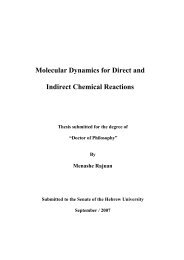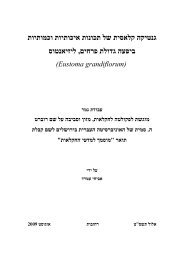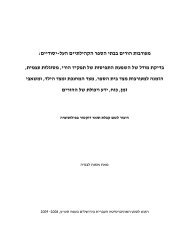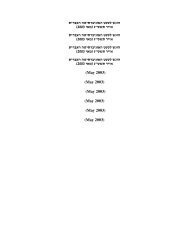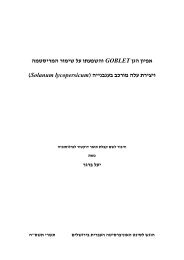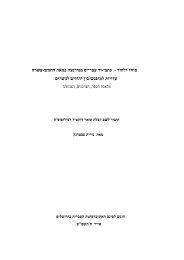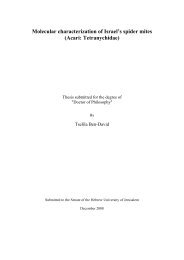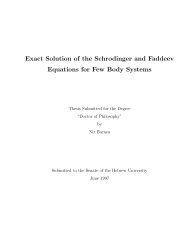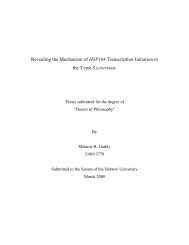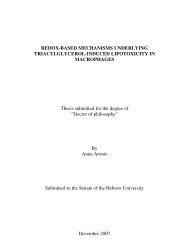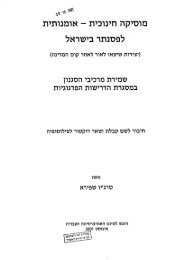The Autecology of Eudiaptomus cf drieschi (Poppe & Mrazek 1895 ...
The Autecology of Eudiaptomus cf drieschi (Poppe & Mrazek 1895 ...
The Autecology of Eudiaptomus cf drieschi (Poppe & Mrazek 1895 ...
You also want an ePaper? Increase the reach of your titles
YUMPU automatically turns print PDFs into web optimized ePapers that Google loves.
incubated at 24 0 C exhibited extremely high mortality, and did not reach the third<br />
naupliar stage. <strong>The</strong>se results were not included in the analysis.<br />
2.4.2 Data Analysis<br />
Secondary production (P) <strong>of</strong> the lake population was calculated based on experimental<br />
measurements utilizing the growth increment method from Downing and Rigler (1984):<br />
P = N (m max - m min ) / D (3)<br />
In this calculation, N, is the average number <strong>of</strong> individuals in a size class at a specific<br />
time. Maximum and minimum biomass (m min and m max ) was measured from the<br />
experiments. Development time (D), was taken as the time it took an individual to grow<br />
from m min to m max .<br />
Finite birth rate (B) was obtained by measuring embryonic development (D) over a<br />
series <strong>of</strong> temperatures in the laboratory, which was then related to the number <strong>of</strong> eggs<br />
from the field data (recruitment <strong>of</strong> eggs to nauplii):<br />
Eggs / L / day = Eggs / Liter / day (4)<br />
D<br />
This is then divided by the size <strong>of</strong> the population at the specific time to give the birth<br />
rate relative to the field population sampled at the time:<br />
B = Eggs / L / day<br />
No./L<br />
(4a)<br />
<strong>The</strong> instantaneous birth rate (b), was calculated as:<br />
b = ln (1+B) (5)



